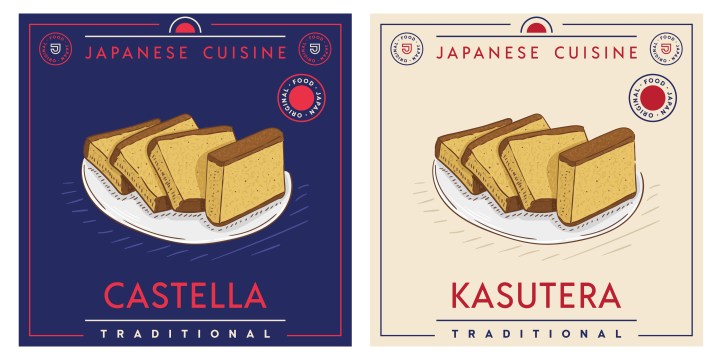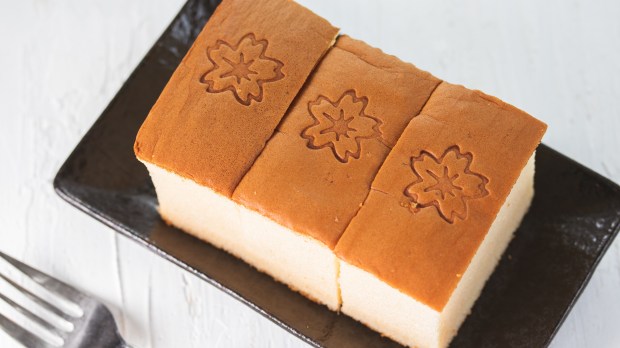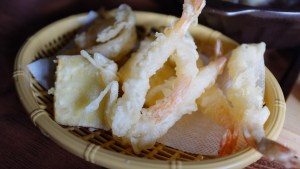Kasutera is a specific kind of wagashi. The word wagashi is used to refer to Japanese traditional confectionery. But Kasutera is not originally Japanese. Just like tempura, it was brought to Japan by Jesuit Iberian missionaries in the second half of the 16th century.
Kasutera developed in Japan during the Azuchi–Momoyama period (1574-1600). This was an age of political unification under the daimyo Oda Nobunaga, who was fascinated by Christianity. And although he never converted, he allowed the Jesuits to preach freely in his domain.
Portuguese missionaries and traders
Portugal and Japan started trading in 1543, the Portuguese being the first Europeans to reach the islands. This first trading period is often referred to as the Nanban Trade Period, in which the port of Nagasaki, through the initiative of the famed Jesuit Gaspar Vilela and the Japanese daimyo (feudal lord) Omura Sumitada (who had converted to Christianity), was ceded to the Society of Jesus. Being the only Japanese port open for foreign commerce, Nagasaki became the center of Japanese Catholicism. And so the cakes became known as Nagasaki cakes, the name often used to refer to kasutera.

Through Nagasaki, the Portuguese and the Spanish introduced guns, tobacco, pumpkins, and kasutera to Japan. The cake could be stored for a long time, and so was useful for the sailors who traveled for months. As sugar became more and more expensive in the region, Nagasaki cakes became a delicacy, being offered even to the emperor himself.
Spanish bread
Kasutera is the phonetic derivation of the word Portuguese Castela, which is yet another phonetic derivation of the Castilian (Spanish) Castilla. The Portuguese full name of the Japanese kasutera is Bolo de Castela, which simply translates “cake from Castile.” In Italy and France, the confection is known as “Spanish bread.”
With a rather fluffy and tender crumb, it is simply made from eggs, flour, and sugar, like most Spanish conventual sweet treats. What makes it special is its sponginess: bakers must beat the eggs for quite a long time to be able to introduce sufficient air into the dough to produce this remarkable effect. The batter is then poured into large square or rectangular molds, baked, and cut into long rectangular shapes. Finally, a Japanese sugar syrup called mizuame is added on top.



